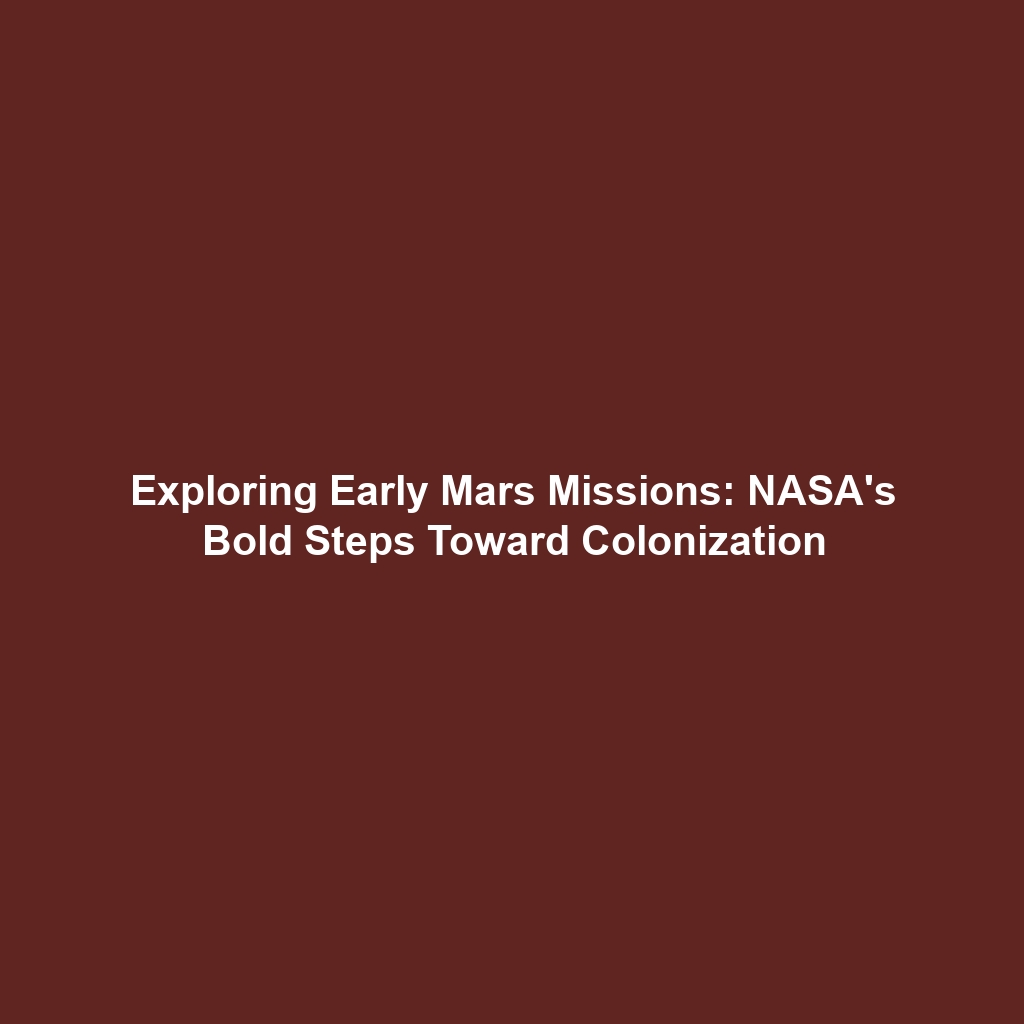Early Mars Missions: Overview of Early Mars Missions by NASA and Other Space Agencies
Introduction
The exploration of Mars has long fascinated humanity, intertwining our quest for knowledge with our ambitions of colonizing Mars. Early Mars missions, spearheaded by NASA and various international space agencies, laid the groundwork for understanding the Martian environment and its potential for supporting human life. These missions have provided critical data that inform current research and future endeavors aimed at establishing a human presence on Mars. This article delves into the significance of these early missions and their pivotal role in the broader framework of colonizing the Red Planet.
Key Concepts
Significance of Early Mars Missions
Early Mars missions primarily comprised orbiters, landers, and rovers designed to gather unprecedented information about the Martian landscape, atmosphere, and geology. Key missions include:
- Viking 1 and 2: Launched in the 1970s, they conducted extensive surface analyses and provided vital data about Mars’ potential habitability.
- Mariner Missions: These were among the earliest to capture images of Mars, paving the way for future exploration.
- Pathfinder: Launched in 1996, it demonstrated new technologies for landing and exploring the Martian surface.
These missions are foundational in achieving our long-term goals of colonizing Mars, offering insights that drive technological advances and strategic planning for future human expeditions.
Applications and Real-World Uses
How Early Mars Missions Contribute to Colonizing Mars
Early Mars missions have numerous practical applications that influence the colonization of Mars:
- Data Collection: Information from these missions informs habitat construction, resource utilization, and life support systems.
- Technological Advancements: Innovations in robotics and AI from Mars rovers enhance capabilities for autonomous construction on Mars.
- Scientific Understanding: Insights into Martian weather and geology are critical for planning safe human landings and operations.
Through these applications, the contributions of early missions remain crucial to our goal of establishing a sustainable human presence on Mars.
Current Challenges
Challenges in Early Mars Missions
Despite their successes, several challenges need addressing:
- Telecommunication Delays: Communication between Earth and Mars experiences significant delays, affecting real-time decision-making.
- Environmental Hazards: Mars presents extreme temperatures and dust storms that complicate mission planning and equipment reliability.
- Funding and Resource Allocation: Sustaining long-term missions requires careful budgeting which often faces political and economic hurdles.
These challenges underscore the complexities of early Mars missions in pursuit of colonization.
Future Research and Innovations
Upcoming Innovations in Early Mars Missions
Looking ahead, several exciting avenues of research and technology promise to advance our efforts towards colonizing Mars:
- In-Situ Resource Utilization (ISRU): Technologies aimed at using Martian resources to support human life.
- Advanced Robotics: Next-gen rovers equipped with AI to perform more complex tasks autonomously.
- New Mars Missions: Upcoming missions such as the Mars Sample Return could yield critical samples for understanding the potential for human habitation.
These innovations are poised to enhance the feasibility of future Mars missions and ultimately the colonization of the planet.
Conclusion
Early Mars missions have played an indispensable role in preparing for the possibility of colonizing Mars. From providing essential data about the Martian environment to catalyzing key technological developments, their significance cannot be overstated. Looking to the future, continued investment in Mars exploration is vital. For more information on upcoming missions and research, visit our other sections on Mars exploration and space technology advancements.

Leave a Reply